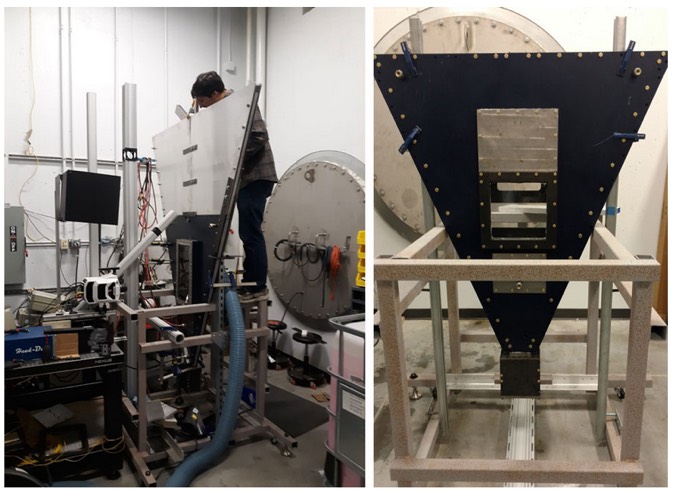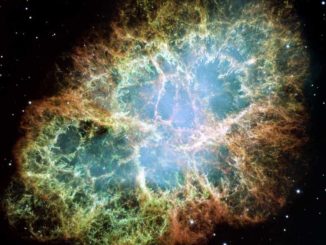To better understand the forces that shape the evolution of exploding stars, researchers at the Georgia Institute of Technology have built what amounts to a “supernova in a box” to mimic at small scales what goes on in a blast like the one responsible for the Crab Nebula.
The device is about the size and thickness of a door but shaped like a slice of pizza, about four feet wide at the top and standing on its tip. When a small explosion is triggered in the tip, the blast wave moves toward the top through two layers of gas that are illuminated by laser beams.
The resulting turbulent mixing mimics in miniature how denser layers of gas closer to an exploding star’s core are blasted through overlying layers of lower density material. The blast wave turbulence in the machine is photographed by high-speed cameras. An internal scale allows researchers to extrapolate to astronomical speeds a
“We suddenly go from a perfectly still chamber to a little supernova,” said principal investigator Devesh Ranjan, a professor in Georgia Tech’s George W. Woodruff School of Mechanical Engineering. “There was a lot of engineering done to contain the blast and at the same time make it realistic where it hits the gas interface in the visualisation window.”

The supernova machine was built by Ben Musci, a graduate research assistant in Ranjan’s lab and first author of a paper in The Astrophysical Journal.
“The hard part was troubleshooting the artefacts that were not part of supernova physics. I spent a year getting rid of things like an extra shock wave bouncing around in the chamber or air leaking in from the room,” he said. “I also had to make sure that gravity, background radiation, and temperature did not throw off the physics.”
The machine uses small amounts of a commercial detonator to create small blasts that send a clean pressure wave through layers of heavier and then lighter gases. In a real supernova, the blast wave is spherical in all directions. Musci’s machine manages a curvature in its blast wave that at least partially mimics reality, complete with small perturbations.
“One of the most interesting things we saw related to a mystery about supernovas,” Musci. “They shoot high density gas called ejecta way out, which may help create new stars. We saw some of this gas propulsion in the device where heavy gas was propagated way out into the light gas.”



